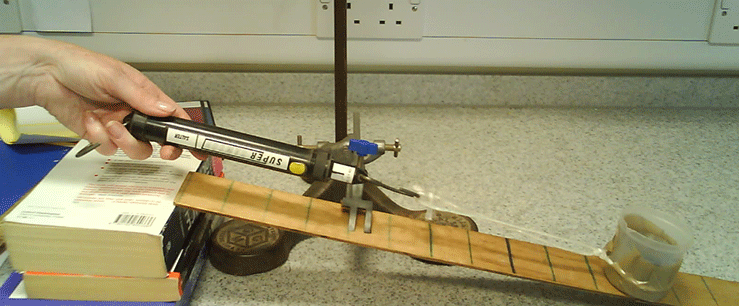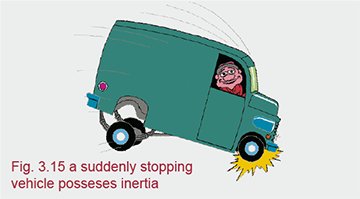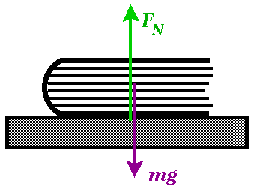A mass of 1 kg on our planet Earth, weighs almost 10 N.
A mass of 2 kg weighs 20 N.
A mass of 3 kg weighs 30 N and so on.

Weight of a body varies place to place and becomes zero on the centre of the Earth and far away from the surface of the Earth. The S.I. Unit of weight is newtons, denoted by N.

Mass & Inertia
MassThe amount of matter contained in an object is called mass.
The SI unit of mass is kilograms, denoted by Kg.
Mass of a body is always constant everywhere in the universe.
InertiaThe property of matter due to which it preserves its state of rest or uniform motion is called inertia.
ExamplesA) A block rests on a piece of card. Quickly remove the card horizontally, or flick the card sharply, the block falls in the jar. The block will not go with the card, but falls down vertically in the jar. This is because; in horizontal direction the stationary block remains at rest.

B) When a car is suddenly stopped, the passengers are always fallen forward which causes the front springs of the car to squeeze down due to more weight. This is because any object which has mass causes inertia. It tends to resist any change to the state of motion.

C) If a bus suddenly stops after applying brakes, the passengers fall in the forward direction. The upper part of the passengers, sitting inside the bus bend forward due to inertia. Nothing happens to the lower part of the body of a passenger because it is in contact with the seat of the bus and is stopped with it.

D) When a fast moving cyclist applies brakes suddenly, he or she falls forward at the handle because the lower part of his body stops with the bicycle but the upper part continues its motion, so cyclist falls forward.
ConclusionBy the above explanation of inertia, we conclude that the state of rest or motion does not change by itself unless an external force acts upon it. Everybody in the universe opposes the force which tends to change its state of rest or of uniform motion.
The bigger the mass, the greater the inertia of a body. As heavy bodies due to greater inertia requires forces of large magnitude and bodies of small masses require small forces. The law of inertia is similar to the Newton's First Law of Motion, which can be defined as.Newton's First Law of Motion , which can be defined as.
Newton's First Law of Motion
An object at rest remains at rest and an object in motion remains in motion in a straight line at a constant speed unless an external force is applied on it.
ExplanationFirst law of motion consists of two parts:
- The first part states that a body at rest remains at rest unless an unbalanced force acts upon it, for example, a book lying on a table remains at rest unless it is lifted or pushed by an external force.

Newton's First Law of Motion - Second part states that a body in motion remains in motion with uniform velocity unless an unbalance force acts upon it.
This part is not supportive on the Earth because a ball pushed once does not continue its motion forever. A little consideration however, shows that there is an opposing force like ground friction and air friction acting in this case. These frictional forces are responsible to stop the ball. If we overcome these opposing forces, a body in motion will continue its motion forever as they move in the space.

Newton's First Law of Motion

